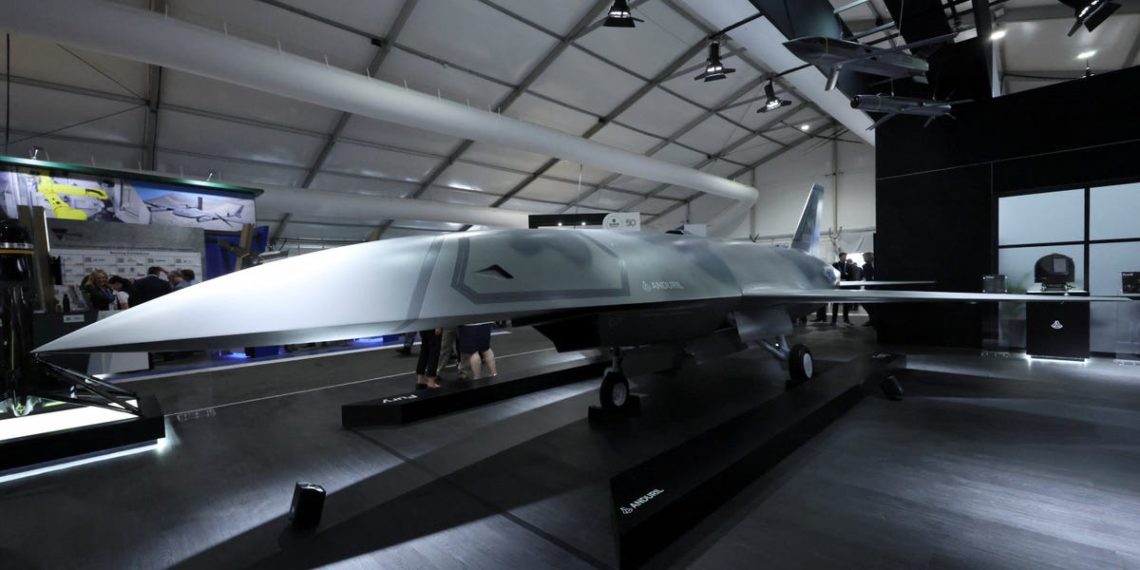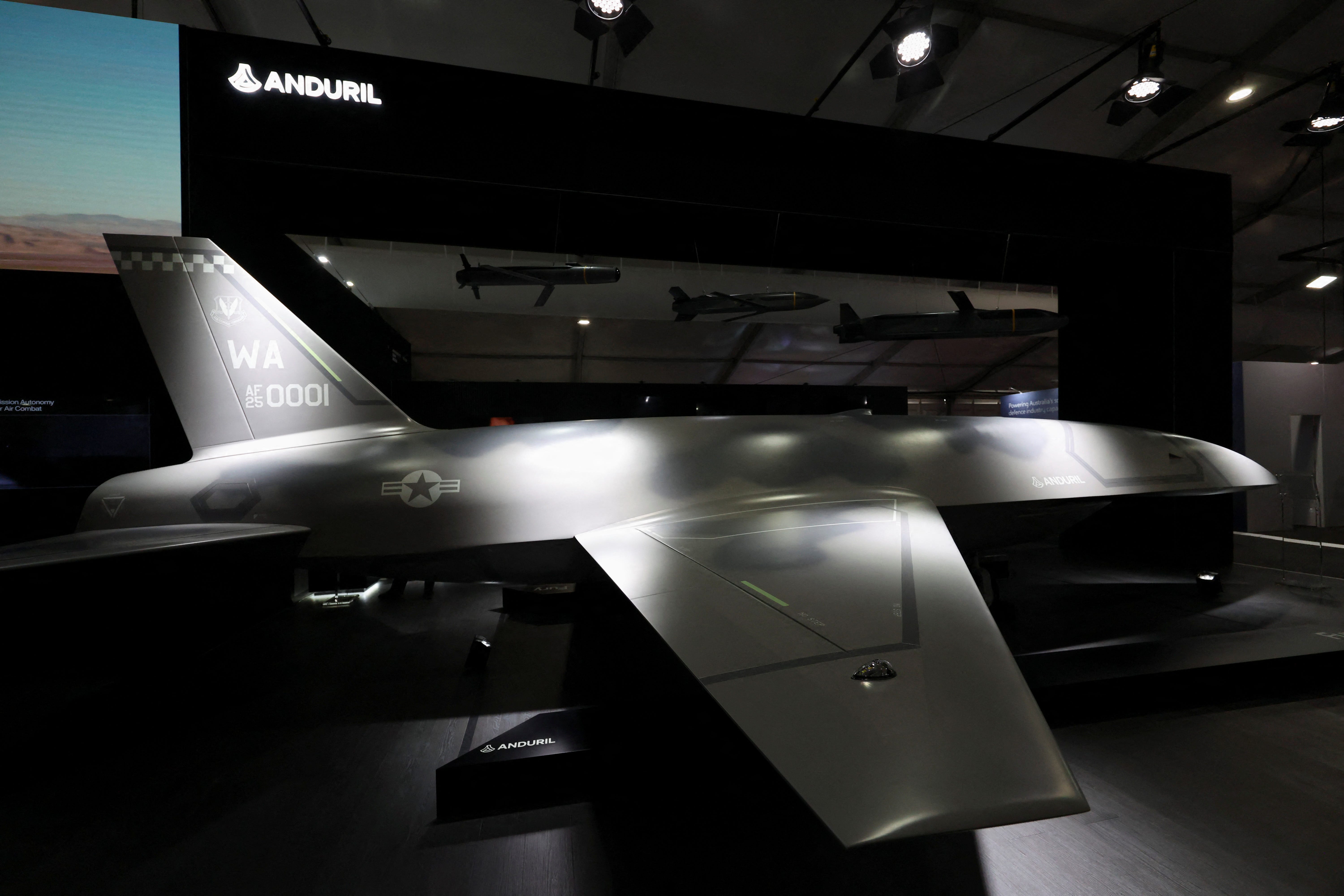
Hollie Adams/REUTERS
Drones have evolved far beyond their decades-old roles as battlefield surveillance tools into thinking machines capable of rivaling experienced pilots.
With demand for military drones surging, defense tech startups like Anduril Industries are racing to build the next generation of autonomous weapons systems designed for combat across land, air, and sea, even as concerns over their use grow.
Founded by Oculus VR headset creator Palmer Luckey in 2017, the California-based defense company has developed a range of modular, AI-driven systems for the US military, beating out Anduril’s competitors like Boeing and Lockheed Martin.
Here’s a look at Anduril’s products that include cutting-edge weapon systems and surveillance drones, from the Air Force’s first uncrewed fighter jet, the Anduril Fury, to the Anduril Bolt, a compact drone that can fit in a backpack.
Fury

Anduril Industries
Initially developed by US-based aerospace company Blue Force Technologies, the Fury autonomous air vehicle (AAV) was acquired by Anduril in 2023.
The Fury is propelled by a single turbofan engine and reaches speeds of over 650 miles per hour. Depending on its payload, it can fly up to 50,000 feet high and tolerate thrusts of up to nine times the force of gravity — sustained Gs that could knock out a pilot.
The modular autonomous aircraft features Anduril’s Lattice software, a digital command-and-control center that uses AI to integrate data from drones, cameras, sensors, and radar systems. It can likely carry missiles to strike other aircraft, but the full range of its capabilities hasn’t been publicly revealed.
The US Air Force marked the Fury as one of its first uncrewed fighter jets as part of the Next-Generation Air Dominance program, which aims to develop a sixth-generation fighter whose human pilot assigns mission tasks to their uncrewed wingmates.
Designated as the YFQ-44A, the Fury is set to operate as “loyal wingmen,” or collaborative combat aircraft, alongside crewed F-22 Raptors and F-35 Lightning IIs, or autonomously by itself or in small groups.
Barracuda
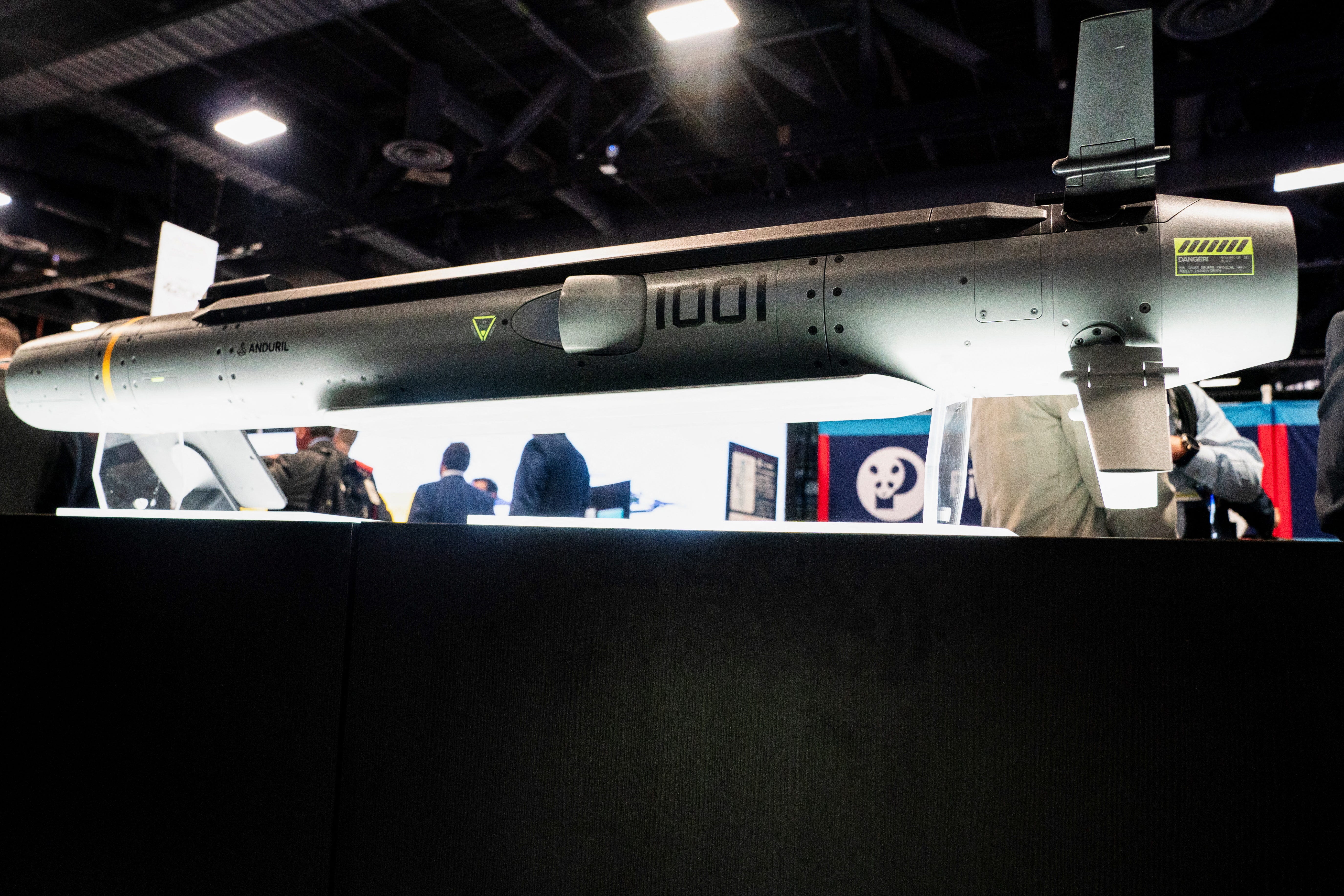
Nathan Howard/REUTERS
Anduril’s Barracuda is designed to act as a next-generation cruise missile, with a focus on affordability, adaptability, and rapid production.
There are three Barracuda variants intended to launch from various platforms.
The smallest model, the Barracuda-100, is designed for missions requiring agility, endurance, and compact payloads. With a range of over 120 nautical miles, it can accommodate a 40-pound payload and potentially launch from rotary- or fixed-wing aircraft, ground vehicles, and boats.
The mid-size variant, the Barracuda-250, can strike aerial targets over 200 nautical miles away. It is designed to launch from bombers and fighter jets or from surface vessels.
The Barracuda-500, the largest model, has a range of over 500 nautical miles and can carry payloads of more than 100 pounds. It can launch from fighters like the F-15E, F-18, and F-16, or it can be palletized in the Rapid Dragon missile system and deployed from a C-17 or C-130. The Barracuda-500 is part of a US Air Force and Defense Innovation Unit project developing future autonomous aerial vehicles.
Ghost
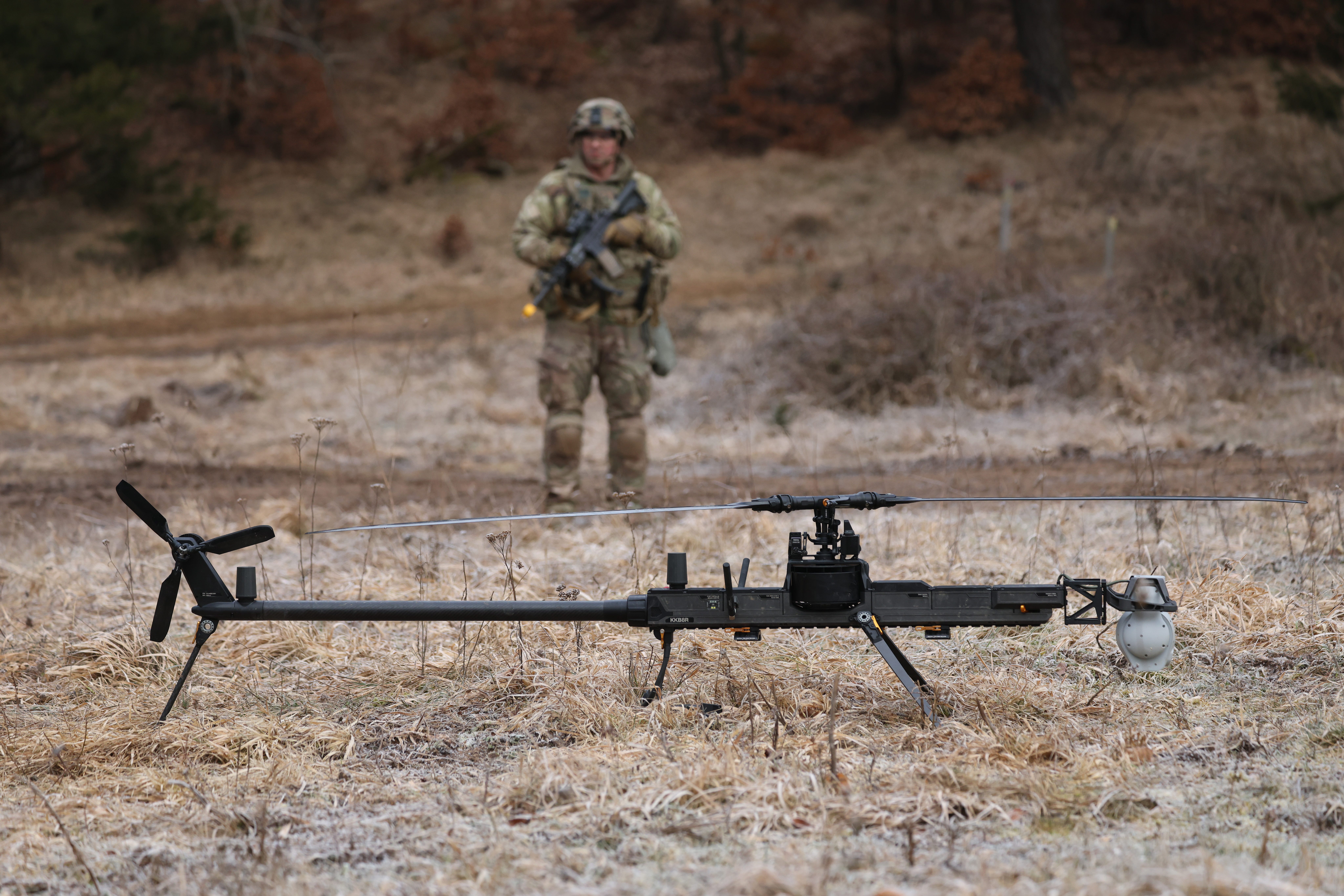
Sean Gallup/Getty Images
The Ghost is a portable, uncrewed aircraft system that can be assembled in less than two minutes and fit in a rifle or tactical soft case.
Designed for intelligence, surveillance, and reconnaissance missions, the UAS features can autonomously detect and track objects while navigating the terrain.
The 37-pound baseline variant of the Ghost drone can operate for nearly an hour with a range of 7.5 miles. The larger Ghost-X model can fly for up to 75 minutes and 15.5 miles and accommodate payloads of 20 pounds.
Roadrunner
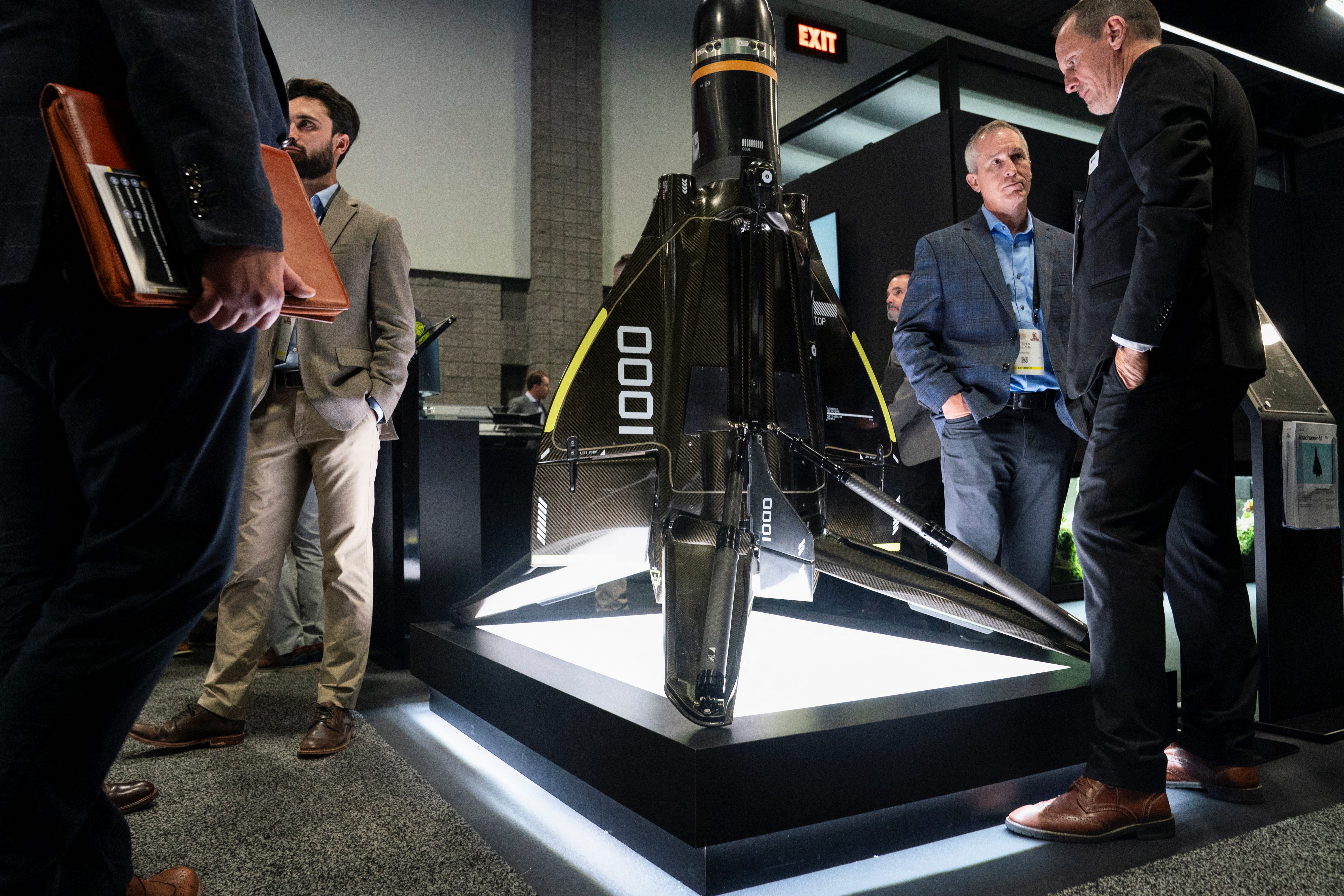
Nathan Howard/REUTERS
The Roadrunner is a reusable AAV designed for vertical take-off and landing (VTOL). Powered by twin turbojet engines, it can reach high subsonic speeds with high G-force maneuverability.
Featuring advanced AI-driven technology, a single operator can control several Roadrunners simultaneously and integrate with air defense radars and sensors.
The Roadrunner-M, the explosive interceptor variant, is purpose-built for ground-based air defense and can detect and target various aerial threats. The Roadrunners are kept and maintained in the Nest, an automated portable hangar that can launch the drone in seconds.
Anduril has secured multiple U.S. military contracts aligned with the Pentagon’s push for AI-driven defense capabilities. In October 2024, The Defense Department awarded a nearly $250 million contract to Anduril for drone defense, including over 500 Roadrunner-M interceptors and Pulsar electronic warfare systems.
The Trump administration has turned to defense tech startups like Anduril to fulfill its military priorities and ambitions, including a space-based missile defense system dubbed the Golden Dome.
During a White House event on American investment on April 30, President Donald Trump featured Anduril’s Roadrunner drone while highlighting the defense firm’s plans to build a massive drone plant in Ohio.
Altius
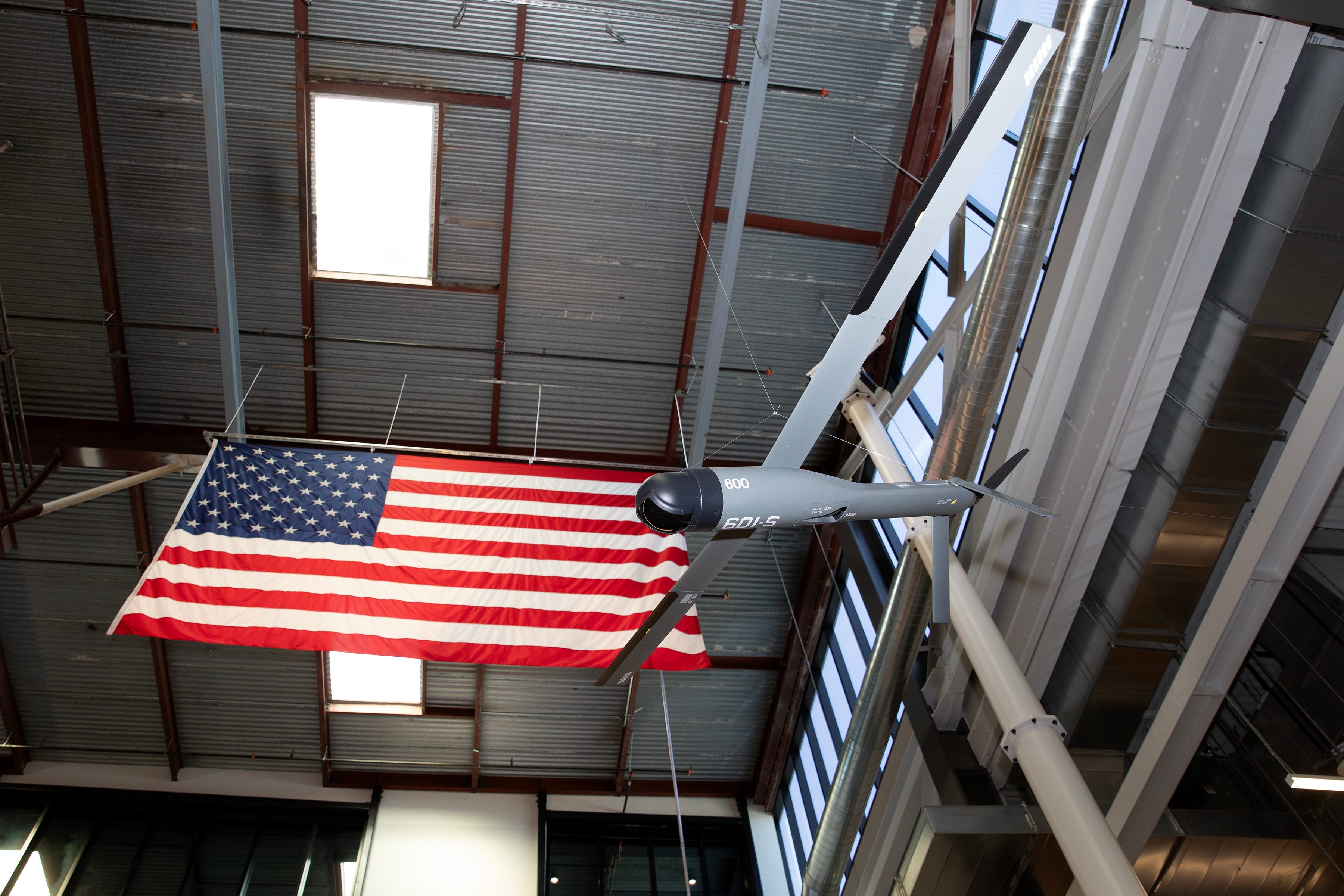
Alisha Jucevic for The Washington Post via Getty Images
Anduril’s air systems also include the Altius, autonomous attack drones capable of kinetic and electronic warfare launched from a tube from the ground, air, or sea.
The Altius UAS can deliver coordinated strikes as loitering munitions and it can also intercept and analyze signals for intelligence, identify targets from a distance with long-range cameras and sensors, or act as a decoy to draw away enemy fire.
There are several variants of the Altius, which stands for Agile-Launched, Tactically-Integrated Unmanned System.
Designed for ISR missions, electronic warfare, and signals intelligence, the Altius-600 can operate for up to four hours and travel about 273 miles. The enhanced variant, the Altius-700, can accommodate larger payloads of up to 65 pounds, operate for up to five hours, and travel over 300 miles.
Anduril also developed two variants of its attack drones. The Altius-600M can be equipped with a high-explosive warhead weighing about six pounds for kinetic strikes. With a range of 100 miles and endurance of a little over an hour, the Altius-700M can carry a 33-pound warhead, like an AGM-114 Hellfire missile.
Hundreds of Altius attack drones have been supplied to Ukraine as part of the US military aid package in April 2023.
Bolt
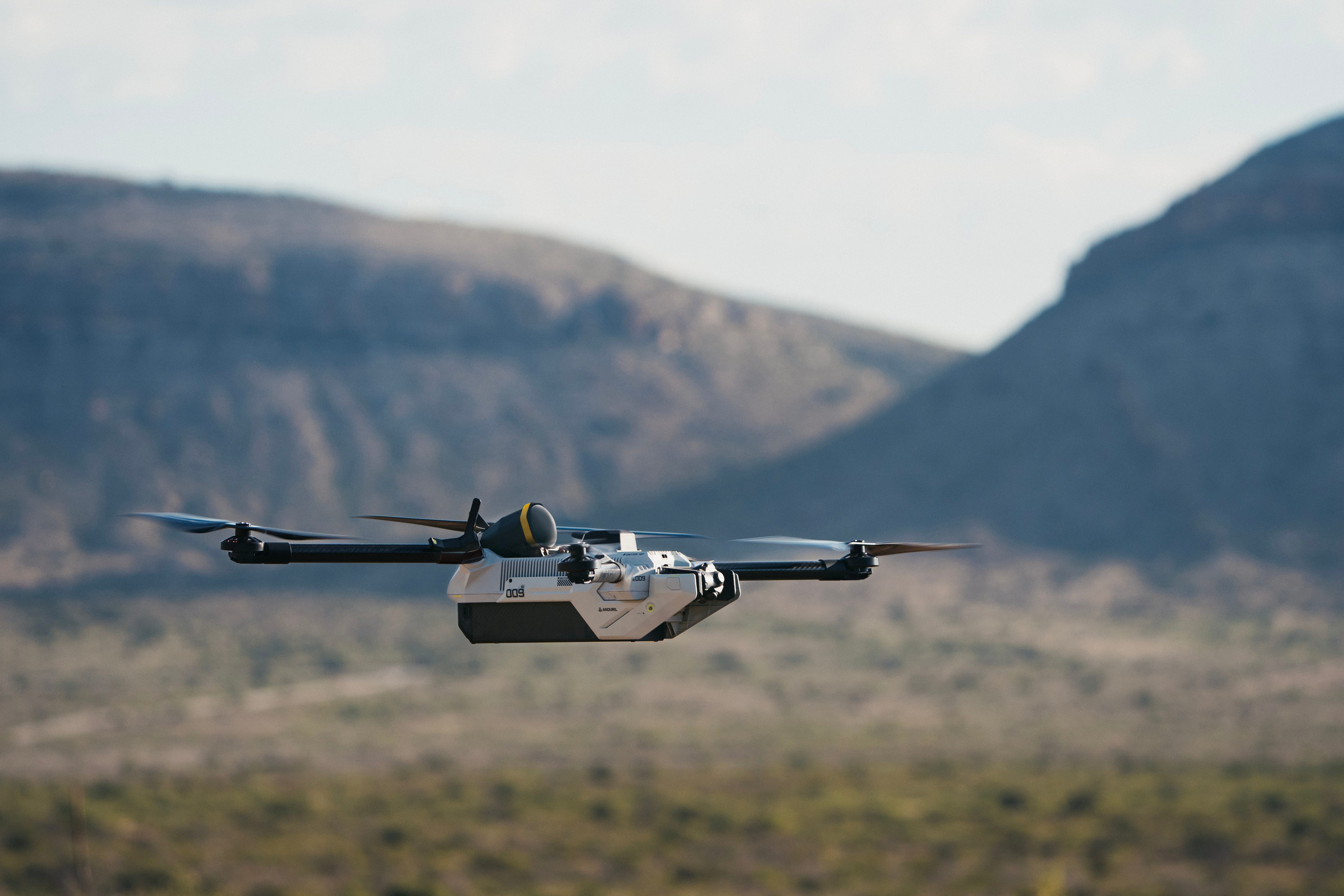
Anduril
In October 2024, Anduril unveiled the Bolt, an AI-guided compact drone that can fit in a backpack. The system’s base configuration is programmed to detect and identify targets for ISR and search-and-rescue missions.
The customizable attack drone can operate for over 40 minutes and cover about 12 miles.
The munition variant, the Bolt-M, can autonomously track and strike targets like light vehicles and trenches with “lethal precision,” the company said in a press release. The Bolt-M’s onboard AI software simplifies controls for human operators, who only need to know “where to look, what to follow, how to engage, and when to strike.”
Integrating AI in warfare
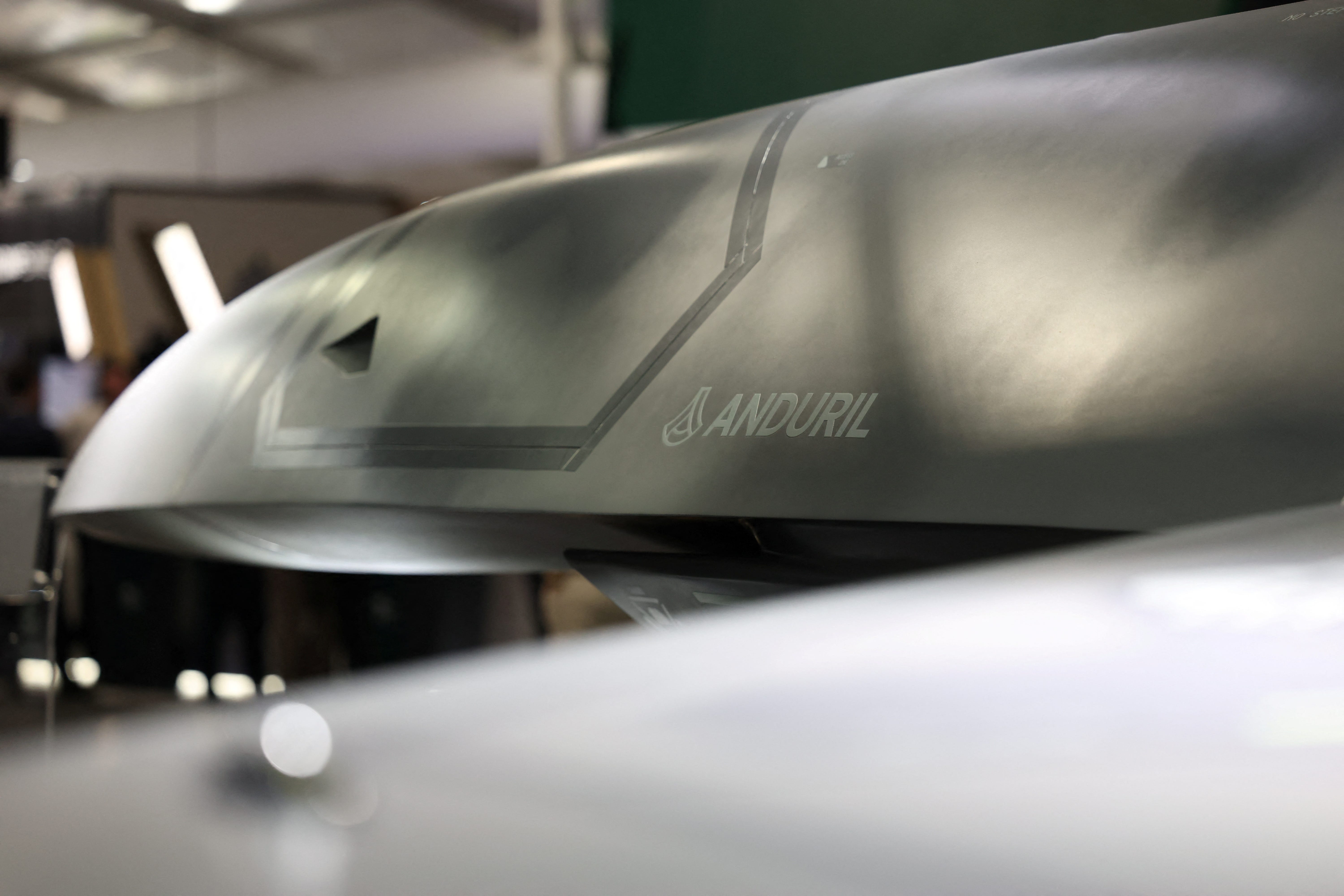
Hollie Adams/REUTERS
Anduril has long demonstrated its commitment to integrating AI into military systems — and it show no signs of slowing down, collaborating with companies like Rheinmetall, Microsoft, and OpenAI to develop advanced autonomous defense capabilities.
Anduril has announced efforts to develop an AI-enabled electromagnetic warfare system called Pulsar and plans to build a hyperscale drone manufacturing facility in Columbus, Ohio, called Arsenal-1. The massive 5-million-square-foot plant is expected to produce tens of thousands of military systems a year.
Drones controlled via radio frequency are vulnerable to electronic jamming. Autonomy is one promising workaround — where the drone executes an assigned task such as scouting for enemy air defenses — but it comes with its own technical and ethical issues.
The growing use of AI in warfare has sparked sharp debate over its safety, risk, and ethics, particularly surrounding autonomous lethal decision-making.
Luckey, however, argued that AI integration into the defense industry is inevitable and advocated for continued military partnerships with tech companies. The Anduril founder emphasized the importance of the US maintaining an edge in the AI arms race, especially against adversaries like China.
“We’ve been in this world of systems that act out our will autonomously for decades,” he said during a TED Talk in April 2025. “And so the point I would make to people is that you’re not asking to not open Pandora’s box; you’re asking to shove it back in and close it again.”
The post See the Anduril drones that are taking AI-driven warfare to new heights appeared first on Business Insider.
